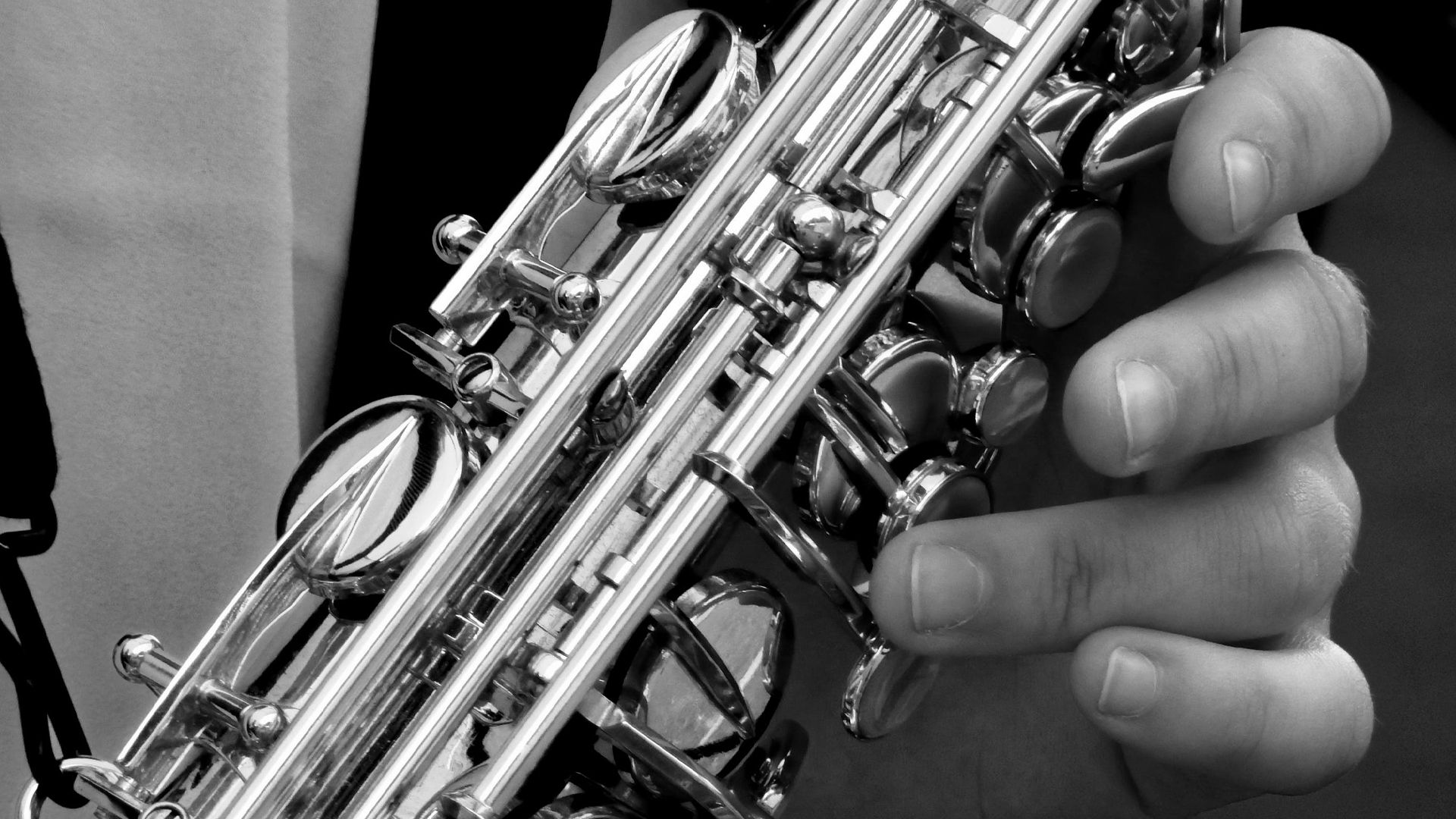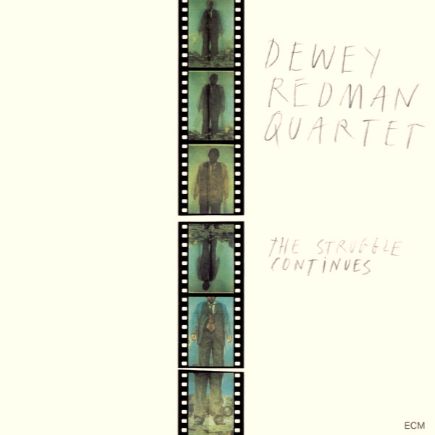Dewey Redman, un souffle libre au cœur du jazz moderne
Figure singulière du jazz d’avant-garde, Dewey Redman incarne la rencontre entre l’héritage du bop et la liberté du free jazz. Né à Fort Worth, au Texas, il grandit dans une ville au terreau musical fertile, berceau d’autres géants comme Ornette Coleman, avec qui il partagera plus tard l’une des collaborations les plus marquantes du jazz moderne. Dewey Redman s’y forge un son profondément personnel, à la fois chaud, dense et habité, marqué par une expressivité rare et une recherche constante d’authenticité.
Après des études à la Prairie View A&M University, il s’installe à San Francisco dans les années 1950, où il enseigne et joue dans divers ensembles de rhythm and blues et de jazz. Mais c’est au cours des années 1960 que sa carrière prend son véritable essor. En 1968, il rejoint le Ornette Coleman Quartet, participant à des enregistrements essentiels tels que New York Is Now! et Love Call. Aux côtés du maître du saxophone alto, Dewey Redman développe une approche où la mélodie et la dissonance cohabitent dans une tension féconde, contribuant à définir les contours du free jazz le plus lyrique.
Dans les années 1970, il fonde son propre groupe et enregistre plusieurs albums sous son nom, parmi lesquels Tarik (1977) et The Ear of the Behearer (1973), œuvres d’une grande richesse harmonique où il mêle improvisation libre, swing et spiritualité. Il collabore également avec le pianiste Keith Jarrett au sein de l’American Quartet, un ensemble mythique complété par Charlie Haden et Paul Motian, notamment dans l’album The Survivors’ Suite. Cette formation, d’une cohésion exemplaire, explore un jazz à la fois poétique et aventureux, où l’intensité émotionnelle prime sur toute démonstration technique.
Dewey Redman, souvent décrit comme un conteur sonore, possédait un art unique de la narration musicale. Son jeu, nourri de blues et de gospel, se distingue par un phrasé profondément humain, capable de passer de la douceur à la transe la plus incandescente. Son timbre, légèrement voilé, traduit un rapport viscéral à l’instrument, où chaque note semble chargée d’une signification intime. Jusqu’à sa mort, Dewey Redman a poursuivi une quête musicale empreinte de sincérité et de liberté, transmettant à son tour cet héritage à son fils Joshua Redman.
Dewey Redman, un soplo libre en el corazón del jazz moderno
Figura singular del jazz de vanguardia, Dewey Redman encarna el encuentro entre la herencia del bop y la libertad del free jazz. Nacido en Fort Worth, Texas, creció en una ciudad de gran vitalidad musical, cuna de otros gigantes como Ornette Coleman, con quien compartiría más tarde una de las colaboraciones más memorables del jazz moderno. En ese entorno, Redman forjó un sonido profundamente personal, cálido, denso y lleno de vida, marcado por una expresividad poco común y una búsqueda constante de autenticidad.
Tras estudiar en la Prairie View A&M University, se trasladó a San Francisco en la década de 1950, donde enseñó y tocó en diversos conjuntos de rhythm and blues y de jazz. Sin embargo, fue durante los años sesenta cuando su carrera alcanzó su verdadero impulso. En 1968 se unió al Ornette Coleman Quartet, participando en grabaciones esenciales como New York Is Now! y Love Call. Al lado del maestro del saxofón alto, Redman desarrolló un enfoque en el que la melodía y la disonancia convivían en una tensión fecunda, contribuyendo a definir los contornos del free jazz más lírico.
En la década de 1970 fundó su propio grupo y grabó varios álbumes a su nombre, entre ellos Tarik (1977) y The Ear of the Behearer (1973), obras de gran riqueza armónica donde combinó improvisación libre, swing y espiritualidad. También colaboró con el pianista Keith Jarrett en el American Quartet, un conjunto mítico completado por Charlie Haden y Paul Motian, especialmente en el álbum The Survivors’ Suite. Esta formación, de cohesión ejemplar, exploraba un jazz tanto poético como aventurero, donde la intensidad emocional prevalecía sobre cualquier demostración técnica.
A menudo descrito como un narrador sonoro, Dewey Redman poseía un arte único para la narración musical. Su interpretación, nutrida de blues y gospel, se distingue por un fraseo profundamente humano, capaz de pasar de la ternura a la más ardiente de las trances. Su timbre, ligeramente velado, expresaba una relación visceral con el instrumento, donde cada nota parecía cargada de un significado íntimo. Hasta su muerte, Redman continuó una búsqueda musical impregnada de sinceridad y libertad, transmitiendo este legado a su hijo Joshua Redman.
Dewey Redman, un soffio libero nel cuore del jazz moderno
Figura singolare del jazz d’avanguardia, Dewey Redman incarna l’incontro tra l’eredità del bop e la libertà del free jazz. Nato a Fort Worth, in Texas, crebbe in una città dal terreno musicale fertile, patria di altri giganti come Ornette Coleman, con il quale avrebbe poi condiviso una delle collaborazioni più significative del jazz moderno. In quel contesto, Redman plasmò un suono profondamente personale, caldo, denso e intenso, caratterizzato da un’espressività rara e da una costante ricerca di autenticità.
Dopo aver studiato alla Prairie View A&M University, si trasferì a San Francisco negli anni Cinquanta, dove insegnò e suonò in diversi ensemble di rhythm and blues e di jazz. Ma fu negli anni Sessanta che la sua carriera prese davvero slancio. Nel 1968 entrò a far parte dell’Ornette Coleman Quartet, partecipando a registrazioni fondamentali come New York Is Now! e Love Call. Accanto al maestro del sassofono contralto, Redman sviluppò un approccio in cui melodia e dissonanza convivevano in una tensione feconda, contribuendo a definire i contorni del free jazz più lirico.
Negli anni Settanta fondò il proprio gruppo e incise diversi album a suo nome, tra cui Tarik (1977) e The Ear of the Behearer (1973), opere di grande ricchezza armonica in cui univa improvvisazione libera, swing e spiritualità. Collaborò inoltre con il pianista Keith Jarrett all’interno dell’American Quartet, una formazione leggendaria completata da Charlie Haden e Paul Motian, in particolare nell’album The Survivors’ Suite. Questo ensemble, di straordinaria coesione, esplorava un jazz tanto poetico quanto avventuroso, dove l’intensità emotiva prevaleva su ogni virtuosismo tecnico.
Spesso descritto come un “narratore sonoro”, Dewey Redman possedeva un’arte unica della narrazione musicale. Il suo stile, nutrito di blues e gospel, si distingueva per un fraseggio profondamente umano, capace di passare dalla dolcezza alla trance più ardente. Il suo timbro, leggermente velato, rivelava un rapporto viscerale con lo strumento, dove ogni nota sembrava carica di significato intimo. Fino alla sua morte, Redman proseguì una ricerca musicale segnata da sincerità e libertà, trasmettendo a suo figlio Joshua Redman questo stesso lascito.
Dewey Redman, a free spirit at the heart of modern jazz
A distinctive figure of avant-garde jazz, Dewey Redman embodied the meeting point between the heritage of bop and the freedom of free jazz. Born in Fort Worth, Texas, he grew up in a city rich in musical vitality, the birthplace of other giants such as Ornette Coleman, with whom he would later share one of modern jazz’s most memorable collaborations. In that fertile environment, Redman forged a deeply personal sound—warm, dense, and full of life—marked by rare expressiveness and a relentless pursuit of authenticity.
After studying at Prairie View A&M University, he moved to San Francisco in the 1950s, where he taught and played in various rhythm and blues and jazz ensembles. Yet it was during the 1960s that his career truly took flight. In 1968, he joined the Ornette Coleman Quartet, contributing to landmark recordings such as New York Is Now! and Love Call. Alongside the alto saxophone master, Redman developed an approach in which melody and dissonance coexisted in fertile tension, helping define the contours of the most lyrical side of free jazz.
In the 1970s, he formed his own group and recorded several albums under his name, including Tarik (1977) and The Ear of the Behearer (1973), works of great harmonic depth that blended free improvisation, swing, and spirituality. He also collaborated with pianist Keith Jarrett in the American Quartet, a legendary ensemble completed by Charlie Haden and Paul Motian, notably on the album The Survivors’ Suite. This group, known for its remarkable cohesion, explored a form of jazz both poetic and adventurous, where emotional intensity outweighed technical display.
Often described as a “sonic storyteller,” Dewey Redman possessed a unique gift for musical narration. His playing, steeped in blues and gospel, stood out for its deeply human phrasing, capable of shifting from tenderness to fiery trance. His slightly veiled tone reflected a visceral bond with his instrument, with each note charged with intimate meaning. Until his death, Redman pursued a musical journey defined by sincerity and freedom, passing this legacy on to his son, Joshua Redman.


